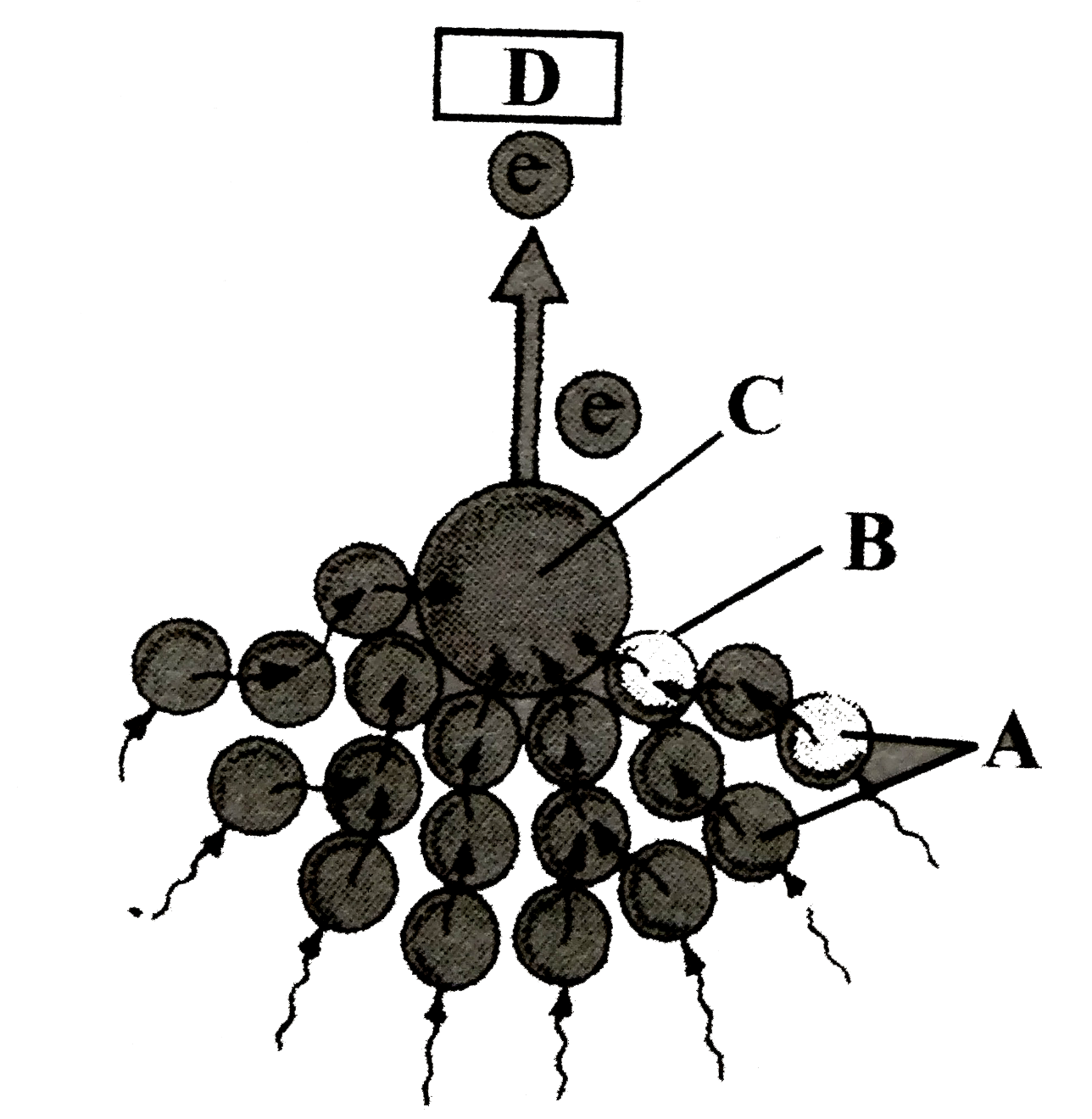[A]: The evolution of molecular oxygen is con- cerned with photosystem-1 (PS-I).
[R]: The photosystem-11 (PS-II) is not involved in the evolution of oxygen
If both A and R are true and R is the correct explanation of A
If both A and R are true but R is not the correct explanation of A
If A is true and R is false
If both A and R are false
The correct Answer is:D
To solve the question regarding the evolution of molecular oxygen and its association with photosystems, we can break it down step by step:
Step 1: Understand Photosystems
Photosystems are complexes in the thylakoid membranes of chloroplasts that play a crucial role in photosynthesis. There are two main types: Photosystem I (PS-I) and Photosystem II (PS-II).
Step 2: Identify the Role of PS-II
Photosystem II (PS-II) is primarily responsible for the photolysis of water, a process that splits water molecules into oxygen, protons, and electrons. This reaction occurs when PS-II absorbs light energy, specifically at a wavelength of about 680 nanometers.
Step 3: Clarify the Role of PS-I
Photosystem I (PS-I) absorbs light at a longer wavelength (around 700 nanometers) and is involved in the reduction of NADP+ to NADPH, but it does not directly contribute to the evolution of molecular oxygen.
Step 4: Analyze the Statements
- Statement (A): "The evolution of molecular oxygen is concerned with photosystem-1 (PS-I)" is incorrect because PS-I does not produce oxygen.
- Statement (R): "The photosystem-11 (PS-II) is not involved in the evolution of oxygen" is also incorrect because PS-II is indeed responsible for the evolution of oxygen.
Conclusion
Both statements are false. The correct understanding is that PS-II is the photosystem involved in the evolution of molecular oxygen, while PS-I plays a different role in the photosynthetic process.
Final Answer
Both statements (A) and (R) are false.
---
Photosystems are complexes in the thylakoid membranes of chloroplasts that play a crucial role in photosynthesis. There are two main types: Photosystem I (PS-I) and Photosystem II (PS-II).
Photosystem II (PS-II) is primarily responsible for the photolysis of water, a process that splits water molecules into oxygen, protons, and electrons. This reaction occurs when PS-II absorbs light energy, specifically at a wavelength of about 680 nanometers.
Photosystem I (PS-I) absorbs light at a longer wavelength (around 700 nanometers) and is involved in the reduction of NADP+ to NADPH, but it does not directly contribute to the evolution of molecular oxygen.
- Statement (A): "The evolution of molecular oxygen is concerned with photosystem-1 (PS-I)" is incorrect because PS-I does not produce oxygen.
- Statement (R): "The photosystem-11 (PS-II) is not involved in the evolution of oxygen" is also incorrect because PS-II is indeed responsible for the evolution of oxygen.
Both statements are false. The correct understanding is that PS-II is the photosystem involved in the evolution of molecular oxygen, while PS-I plays a different role in the photosynthetic process.
Both statements (A) and (R) are false.
Topper's Solved these Questions
Similar Questions
[A]: The evolution of molecular oxygen is con- cerned with photosystem-1 (PSI).
[R]: The photosystem-11 (PS-II) is not involved in the evolution of oxygen.View SolutionPhotosystem I (PS I) and photosystem II (PS II) are named in the sequence in which they function during the light reaction.
View Solution
Knowledge Check
- Question 1 - Select One
Given figure depicts the light harvesting comples (LHC) of photosystem I (PS I)

Select the correct identification for A,B,C and DAABCDCore molecuelsAntenna moleculeP680primaryBABCDAntenna molecuelsCoreP700PrimaryCABCDAntenna moleculsCoreP700PlastocyaninDABCDCore moleculesReaction centreP680Plastocyanin - Question 2 - Select One
Read the following statements and selct the correct ones.
(i) PS I is involved in non-cyclic photophosphroylation only.
(ii) PS II is involved in both cyclic and non-cyclic photophosphorylation.
(iii) Stoma lamellae membranes possess PS I only whereas grana lamellae membranes possess both PS I and PS II.Ai onlyBii onlyCiii onlyDi,ii and iii - Question 3 - Select One
Which of the statements given below are true for the structure of water molecule ?
(i) Oxygen undergoes sp3 hybridisation.
(ii) Due to presence of two lone pairs of electrons on oxygen the H - O - H bond angle is 118.4∘.
(iii) Due to angular geometry the net dipole moment of water is not zero, μ=1.84D.A(i) and (ii)B(ii) and (iii)C(i) and (iii)Donly (ii)
An aqueous compound of an inorganic compound (X) shows the following reactions:
a. it decolourises and acidified KMnO4 solution accompanied by the evolution of oxygen.
b. it liberates I2 from an acidified KI solution.
c. It gives a brown precipitate with alkaline KMnO4 solution with evolution of oxygen.
d. It removes black stains from old oil paintings. Identify (X) and give chemical equtions for the reaction at steps (a) to (d).View Solution[A]: Hill and Bendall proposed Z-scheme and suggested that photosystems operate in series.
[R]: The light-dependent reactions require the participation of two light gathering units called PS-I and PS-I I.View SolutionMatch the stoichiometric coefficients listed in Column II with the species listed in Column I that are involved in the balanced equation of the reaction :
LIST -ILIST -II(P)FeC2O4(1)10(Q)MnO−4(2)24(R)H+(3)5(S)CO2(4)3View SolutionConcentrated H2SO4 is added to the test tubes containing (a) to (e).
Test tubeCompoundsa.Cane sugarb.sodium bromidec.Copper turningsd.Sulphur powdere.Potassium chloride
Identify in which of the above test tubes, the following change will be observed on heating. Also give the chemical equations involved.
(i) Formation of black substance.
(ii) Evolution of brown gas.
(iii) Evolution of colourless gas.
(iv) Formation of brown substance, which on dilution becomes blue.
(v) Disappearance of yellow powder along with the evolution of a colourless gas.View SolutionL.C.A.O. principle is involved in the formation of molecular orbitals according to molecular obtital theory. The energy of bonding molecular orbital is less than that of the combining atomic orbitals while that of the anitibonding bonding melecular orbital is more. The B.O. =1/2[Nb−Na]
Answer the following questions on the basis of the above paragraph :
(i) What is bonding molecular orbital ?
(ii) Calculate B.O. of He2 molecule.View Solution

